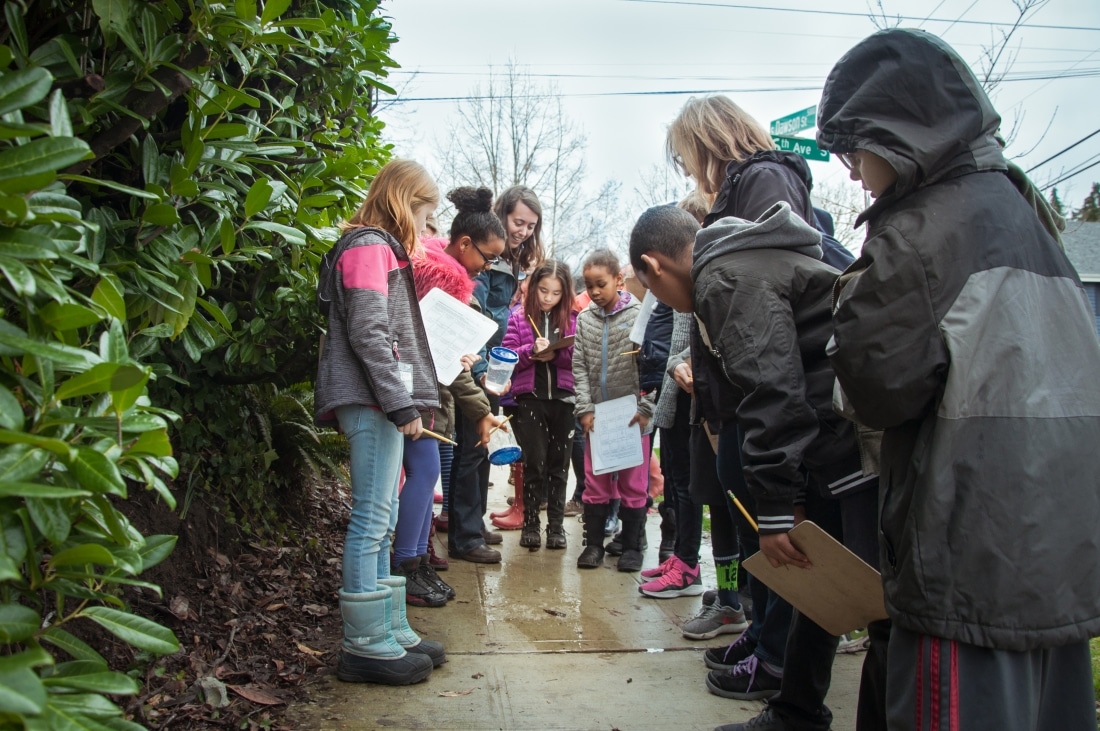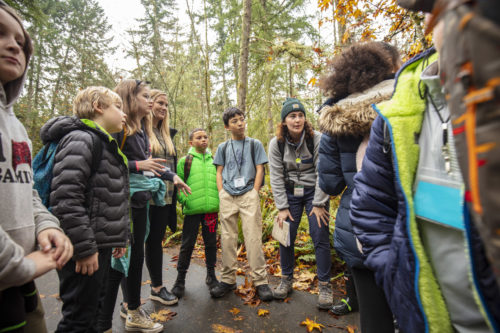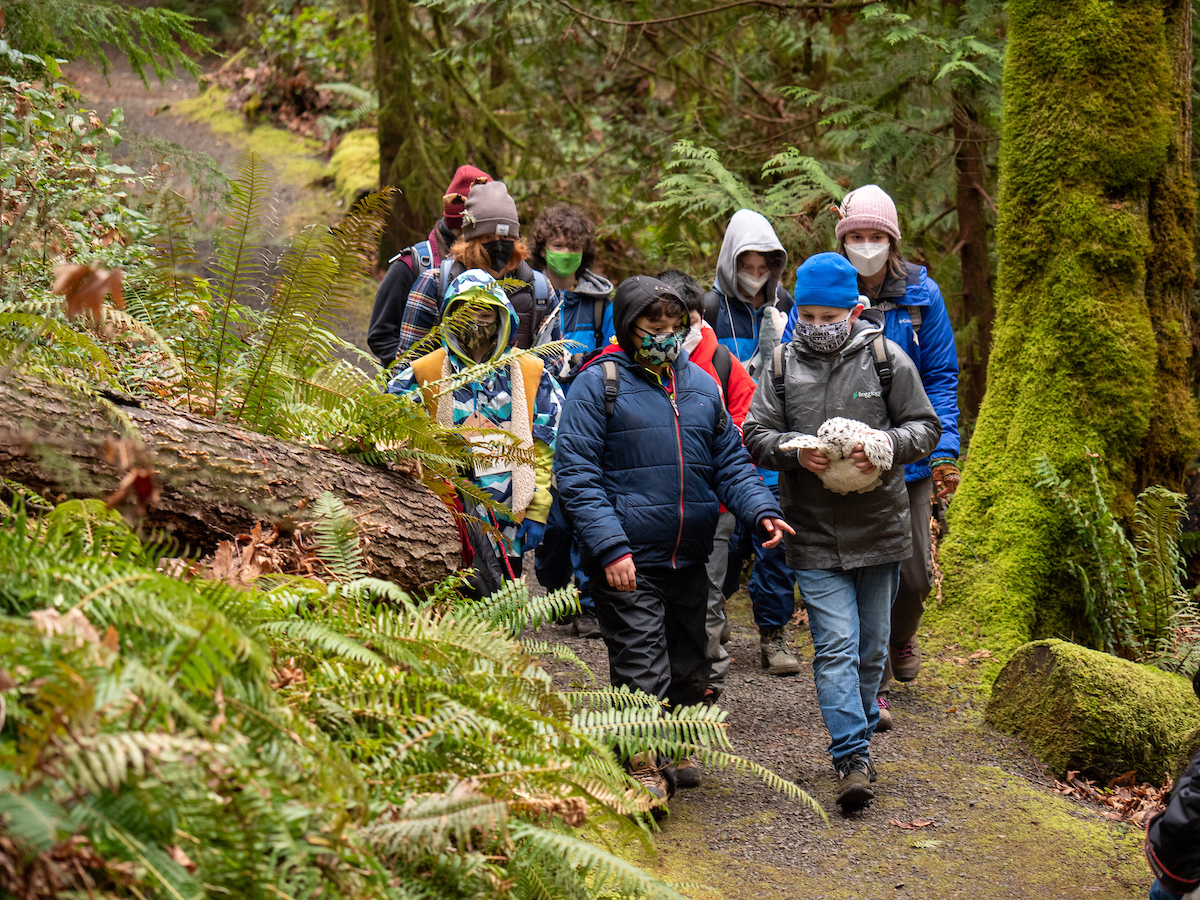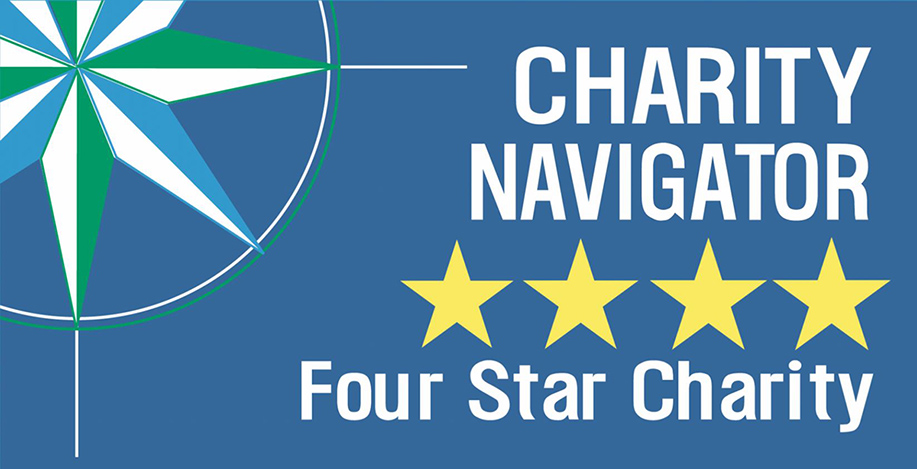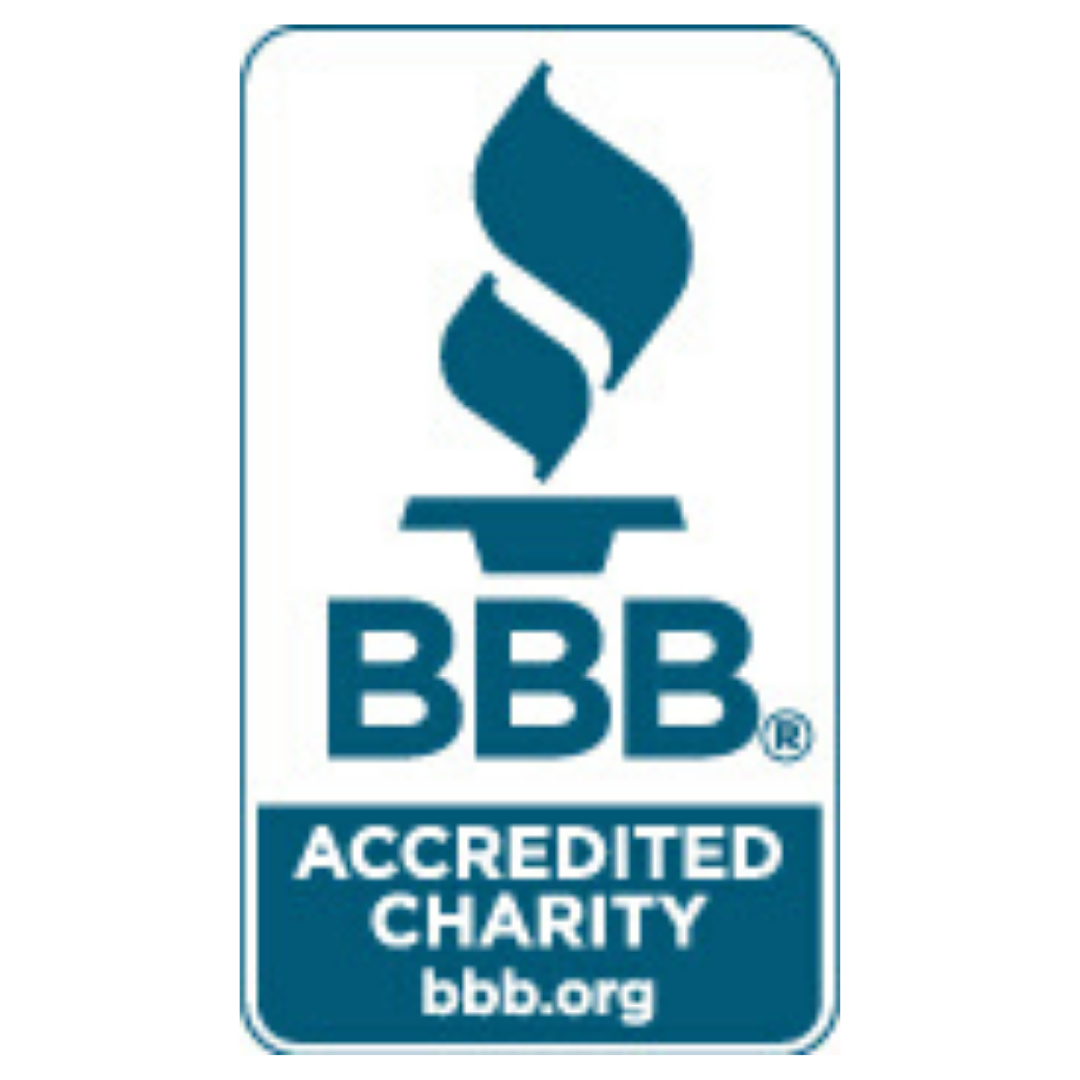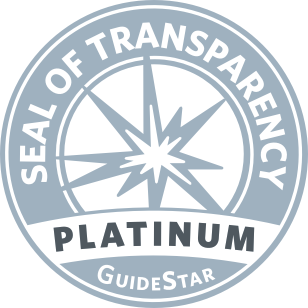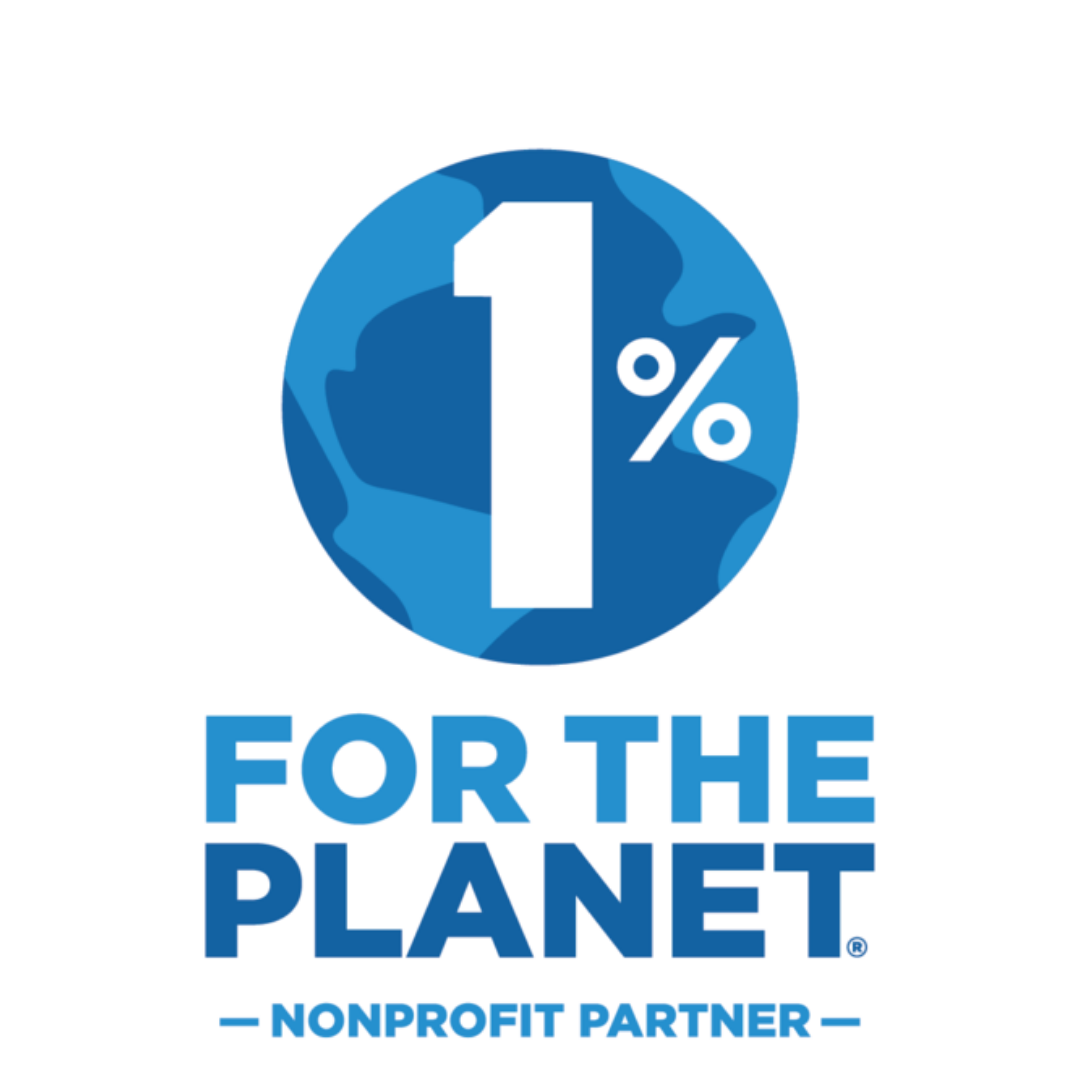As the COVID-19 crisis continues, it’s become increasingly clear that the entire field of environmental…
Author: Hanna Hupp
This blog post is adapted from resources developed by our Community Waters team.
At IslandWood, we believe that opportunities to learn are everywhere. Whether it’s on a bustling city street or in a rain-soaked forest, there is always more to discover about the world around us and our connection to it. And the more we pay attention to our environment, the more we can better understand our impact on the world, our community, and each other.
Our Urban Schools Program team partners with teachers to do just that. In one program, IslandWood has partnered with Seattle Public Schools to develop a stormwater engineering science unit for fourth graders called Community Waters. Built around Next Generation Science Standards, this unit uses the engineering design process and community-based learning to give students the opportunity to investigate and a design a solution to a stormwater problem in their schoolyard.
Even if you and your class haven’t been able to experience this unit firsthand, the following free or low cost programs and field trips (provided both through IslandWood as well as other organizations in our region) can help open doors to greater curiosity and understanding about stormwater and the power of community-connected learning for your students.
SEATTLE AREA
Provided by our Urban School Programs team, this field study is designed to link to the Community Waters Science Unit. This program allows students to investigate how engineers have attempted to solve problems associated with stormwater runoff in Seattle.
IslandWood offers three different School Day Programs for 3rd – 8th grade classes at the King County Brightwater Education Center in Woodinville. Our programs engage students in hands-on investigations and real-world problem solving related to wastewater, stormwater, ecosystems, and environmental engineering.
This field trip examines the parts of a plant and their functions. Observation and data collection are used to understand the interconnections in nature.
To make more explicit connections with Community Waters, inquire about plant adaptations to retain water and prevent erosion.
A field trip examining wetland biodiversity. Like Plants 201, observation and data collection are used to understand the importance of preserving wetlands.
This field trip examines the ways human cultures have been shaped by the ecosystems in which they exist.
To make more explicit connections with Community Waters, inquire about aquatic plants specifically or the function of plants in creating the landscape with which stormwater interacts (For example, how native plants deal with the volume of rain received in the Pacific Northwest).
UW Botanic Gardens: Explorer Pack
The Botanic Gardens provide pre-packed backpacks filled with the supplies for your students to explore the Arboretum as a class. The themed packs, which include field guides, scavenger hunts, magnifying glasses, and activity ideas, include Marsh Madness (providing above and below water exploration) and Sense of Winter (exploring plant diversity and winter adaptations).
This program would make especially good connections for your students if your school’s stormwater enters Lake Washington at the Yesler Swamp.
Discover the ways that human actions can negatively and positively affect tiny creatures like plankton (Puget Sound Plankton Discovery) all the way up to orcas (Orca Discovery) in these school group programs.
To make more explicit connections with Community Waters, inquire about including stormwater in the impact discussion.
Explore the life cycle and needs of Pacific salmon or other intertidal creatures, and how human actions can impact them.
This program would help form especially good connections for your students if you are raising salmon at your school and looking to integrate them into Community Waters, or if your school’s stormwater enters Puget Sound directly.
Seattle Aquarium can provide useful material to lead your own beach walk. This material includes an orientation video, chaperone guide, and ecosystem-specific identification guides. This program would make especially good connections for your students if your school’s stormwater enters Puget Sound directly. Try and look for evidence of stormwater problems, solutions, or infrastructure, and how that might impact the marine creatures you identify during this beach walk.
Habitat Class & Field Programs:
These are two-part programs taking place in both the classroom and at a nearby park or pond. Some of the program themes that are most closely related to stormwater include salmon journeys, wetlands, and watersheds. There is also a forest walk exploring a nature theme of your choosing, which could allow you to look at connections between stormwater and forest ecosystems.
Additionally, Nature Vision offers classroom programs, some of which are free. One of these programs (Watch the Flow, Above and Below) looks at stormwater infrastructure and our impact on the water system, which could complement Lesson 5 of Community Waters.
Stream Connection Programs are a good option if you are raising salmon at your school and looking to integrate them into Community Waters.
This program uses the Olympic Sculpture Park as the context to explore the ways that built and natural environments interact. The program includes an art workshop based on the students’ experience at the Sculpture Park.
SAM notes that their programs can be tailored to specific curriculum needs. This could be a great way to creatively form connections between the environment of the Olympic Sculpture Park and the understanding fostered by Community Waters.
Mercer Slough Environmental Education Center
Looking specifically at the engineering design process and its application to aquatic habitats, the Environmental Engineering program uses the wetland to explore solutions to environmental issues. Alternatively, you can discover the function and inhabitants of a wetland in the Wetland Naturalist and Ecosystem Explorers programs.
Create a customizable field trip from options such as engineering or climate (Puget Sound Model). These programs also include access to Pacific Science Center exhibits and pre-visit guides.
Environmental Science Center at Seahurst Park:
Get to know marine invertebrates in Puget Sound as well as the largest nearshore restoration project in Puget Sound. This NGSS-aligned field study includes a classroom introduction as well as a two hour beach exploration. Program and transportation subsidies are available. This program would make especially good connections for your students if your school’s stormwater makes its way to Puget Sound directly.
Hour-long tours delve into the functioning and purpose of the locks.
This program would make especially good connections for your students if your school’s stormwater makes its way to Puget Sound through the locks.
KITSAP COUNTY
Located in downtown Poulsbo and run by Western Washington University, the SEA Discovery Center provides multiple free school field trip opportunities dedicated to inspiring a deeper sense of understanding and stewardship of the local marine environment, through explorations both inside the Discovery Center as well as at the Center’s Floating Lab on Liberty Bay.
Kitsap County Sharing Environmental Education Knowledge (SEEK)
The SEEK program provides educational field trips to over 13 different recycling and solid waste facilities, sewer facilities, and stormwater project sites. To enhance student understanding of stormwater and its effects on the local environment, consider participating in the Clear Creek Floodplain Project, the Manchester Stormwater Park tour, or the Salmon Haven at Dickerson Creek tour.
This program allows elementary students to tend salmon eggs, donated by the Suquamish Tribe, as they grow, learning about their life cycle, habitat, and the impact of human actions. Students are also able to release the salmon in Silverdale’s Clear Creek, after testing water quality and learning about the Creek’s flora and fauna.
Stillwaters Environmental Center
Stillwaters is an environmental education center in the Carpenter Creek watershed of Kingston.
Stillwaters can provide Discovery Packs, including tools, field guides, and games designed to promote self-guided exploration of the watershed, for a $5 rental fee.
Inquire about Stillwaters’ Educator’s Handbook, which outlines multiple ideas for class field trips and programs designed for students ages 4 – 18. To make strong connections to the Community Waters curriculum, ask for an emphasis on the watershed’s flora and fauna, as well as the human impact on this area.
We hope that these field trips and programs can help complement the Community Waters curriculum by bringing science out of the classroom and into your students’ community, encouraging real-world problem-solving skills, and sparking curiosity and care for our planet and its people.
Know of other great school field trips and community learning spaces? Share them with us on Facebook, Twitter, or Instagram with the hashtag #IslandWoodFieldTrips!

